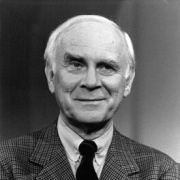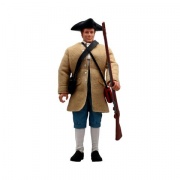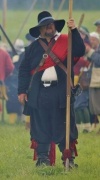Members
Road names
9 posts
• Page 1 of 1
A very random (and possibly boring topic??) but just wondered if anyone else lives on or near any roads/streets named after historical figures or historical events? I was taking a walk around my fine city the other day and I discovered Quebec Road, Wolfe Road and Montcalm Road all next to each other and only a 15 minute walk from me. Whilst I live on a road named after the Duke of Marlborough.
-
Rich W

- Posts: 1341
- Member since:
05 Feb 2018, 23:40
I live in the city of Brisbane, named after a governor of the colony but who was also, of course, one of Wellington's Peninsular generals.
The suburb I live in - Kedron - has biblical connections ("Kedron Brook", near the Garden of Gethsemane) and I often run through Armentieres Street; re-named in 1918 to commemorate the WW1 battle.
Literally 2-3 minutes walk away is the neighbouring suburb of Gordon Park. Given the main road through it is Khartoum Street, you'll get the historical connection.
And so on. History is all around me.
donald
The suburb I live in - Kedron - has biblical connections ("Kedron Brook", near the Garden of Gethsemane) and I often run through Armentieres Street; re-named in 1918 to commemorate the WW1 battle.
Literally 2-3 minutes walk away is the neighbouring suburb of Gordon Park. Given the main road through it is Khartoum Street, you'll get the historical connection.
And so on. History is all around me.
donald
-

Ochoin
- Posts: 2495
- Member since:
16 Jan 2010, 04:00
I can see the island of Elba whenever I take a walk near the harbour. Yes, named after that other island where Nappie spent some time. And downtown we have the Vasa-park, named after Gustav Vasa (our 16th Century freedom fighter and later land-father) during the height of Romanticism.
-

Susofrick
 Supporting Member (Gold)
Supporting Member (Gold) - Posts: 7720
- Member since:
19 Feb 2008, 12:10
Stimulating & entertaining topic. 
Some streets, squares or public buildings named after historical persons, all within short walking distance from my front door.
Anne Frank ("Het Achterhuis", 1929-45)
Hans & Sophie Scholl (iconic regime critics, 1918 & 1921–1943)
Claus von Stauffenberg (army officer & tragic symbol for resistance to Nazism, 1907–44)
Elsa Brändström (swedish nurse & philanthropist, 1888–1948)
Johann Wolfgang von Goethe (scientist & poet, 1749-1832)
Friedrich Schiller (scholar & writer, 1759–1805)
Wolfgang Amadeus Mozart (composer, 1756–91)
Ludwig van Beethoven (composer, 1770–1827)
Albert Einstein (physicist, 1879–1955)
Maria Theresia (Empress of the Habsburg Empire, 1717-80)
Prinz Eugen von Savoyen (Reichsgeneralfeldmarschall of the Habsburg Empire, 1663–1736)
Helmuth von Moltke (Generalfeldmarschall, 1800-91)
Otto von Bismarck (first Reichskanzler, 1815-98)
Gebhard von Blücher (Generalfeldmarschall, 1742–1819)
Ludwig von Lützow (Generalmajor, 1782-1834)
August von Gneisenau (Generalfeldmarschall, 1760-1831)
Albert Schweitzer (universal scholar, 1875-1965)
Robert Koch (physician & microbiologist, 1843-1910)
Arthur Schopenhauer (philosopher, 1788-1860)
Richard Wagner (composer & poet, 1813-83)
Werner von Siemens (inventor & industrialist, 1816-92)
Otto Lilienthal (aviation pioneer, 1848-96)
August Macke (painter, 1887-1914)
Kaiser Friedrich III. (1831-88)
Martin Luther (theologian, 1483-1546)
Kaiser Friedrich I. Barbarossa (1122-90)
Karl der Große (first Kaiser, 748–814)
Nikolaus Kopernikus (mathematician & astronomer, 1473-1543)
Karl Marx (philosopher, economist, political theorist & socialist revolutionary, 1818-83)
Pope John Paul II. (1920-2005)
Charles De Coster (belgian novelist, 1827-79)
César Franck (belgian composer, 1822-90)
President John F. Kennedy (1917-63)
President Nelson Mandela (1918-2013)
Prince Bernhard of the Netherlands (1911-2004)
...
Places that refer to historical events and battles are for example:
Battle of Sedan 1870
Congress of Aix-la-Chapelle 1818
...
Sorry if this seems a bit excessive, but once started I just couldn't stop thinking of ever more suitable locations nearby...


For this part of the world it also seems to apply: history is everywhere.

Some streets, squares or public buildings named after historical persons, all within short walking distance from my front door.
Anne Frank ("Het Achterhuis", 1929-45)
Hans & Sophie Scholl (iconic regime critics, 1918 & 1921–1943)
Claus von Stauffenberg (army officer & tragic symbol for resistance to Nazism, 1907–44)
Elsa Brändström (swedish nurse & philanthropist, 1888–1948)
Johann Wolfgang von Goethe (scientist & poet, 1749-1832)
Friedrich Schiller (scholar & writer, 1759–1805)
Wolfgang Amadeus Mozart (composer, 1756–91)
Ludwig van Beethoven (composer, 1770–1827)
Albert Einstein (physicist, 1879–1955)
Maria Theresia (Empress of the Habsburg Empire, 1717-80)
Prinz Eugen von Savoyen (Reichsgeneralfeldmarschall of the Habsburg Empire, 1663–1736)
Helmuth von Moltke (Generalfeldmarschall, 1800-91)
Otto von Bismarck (first Reichskanzler, 1815-98)
Gebhard von Blücher (Generalfeldmarschall, 1742–1819)
Ludwig von Lützow (Generalmajor, 1782-1834)
August von Gneisenau (Generalfeldmarschall, 1760-1831)
Albert Schweitzer (universal scholar, 1875-1965)
Robert Koch (physician & microbiologist, 1843-1910)
Arthur Schopenhauer (philosopher, 1788-1860)
Richard Wagner (composer & poet, 1813-83)
Werner von Siemens (inventor & industrialist, 1816-92)
Otto Lilienthal (aviation pioneer, 1848-96)
August Macke (painter, 1887-1914)
Kaiser Friedrich III. (1831-88)
Martin Luther (theologian, 1483-1546)
Kaiser Friedrich I. Barbarossa (1122-90)
Karl der Große (first Kaiser, 748–814)
Nikolaus Kopernikus (mathematician & astronomer, 1473-1543)
Karl Marx (philosopher, economist, political theorist & socialist revolutionary, 1818-83)
Pope John Paul II. (1920-2005)
Charles De Coster (belgian novelist, 1827-79)
César Franck (belgian composer, 1822-90)
President John F. Kennedy (1917-63)
President Nelson Mandela (1918-2013)
Prince Bernhard of the Netherlands (1911-2004)
...
Places that refer to historical events and battles are for example:
Battle of Sedan 1870
Congress of Aix-la-Chapelle 1818
...
Sorry if this seems a bit excessive, but once started I just couldn't stop thinking of ever more suitable locations nearby...
For this part of the world it also seems to apply: history is everywhere.

-

Erich von Manstein
- Posts: 1105
- Member since:
03 Jan 2009, 21:31
Here in Norwich, there is Waterloo Road with the lovely Waterloo Park stretched out along part of it. My favorite roadway into life is where i grew up. Shorncliffe Avenue Norwich.
The Real Place
Shorncliffe, is a bright sparkle of a place way up in the Highlands of Scotland, and was where the Rockets were made in Napoleonic days.They used them at Waterloo,and in my head of opinion,they might have set afire Hougoumont, where it was hot all the live long way through that battle. Well the darn things flew zig zag everywhere! And on all sides soldiers had to grab more than their hats to save their heads from those red hot flash landings.
The Avenue
My Dear Mother moved into 67 Shorncliffe Avenue the year the war broke out in 1939 and as the houses were newly built nobody had an Air-raid Shelter in their garden.The Blitz! Came and wondered away elsewhere then returned one dark night blowing up the Norwich Chocolate Factory, where my Sisters both worked. Lucky they had a large underground Shelter there.
Sorry off topic.
Norwich roads built on what was once an RAF Airfield,they are...
Hurricane Way
Stirling Road
Liberator Road,
named so because the USAF flew from there 1942-45
Sunderland Close
Defiant Road
Vulcan Road
Javelin Road
In Honor of Them All
Dowding Road
Mallory Road
Douglas Close
 Now it is time for my Tea. Stay safe,Stay well. BB
Now it is time for my Tea. Stay safe,Stay well. BB
The Real Place
Shorncliffe, is a bright sparkle of a place way up in the Highlands of Scotland, and was where the Rockets were made in Napoleonic days.They used them at Waterloo,and in my head of opinion,they might have set afire Hougoumont, where it was hot all the live long way through that battle. Well the darn things flew zig zag everywhere! And on all sides soldiers had to grab more than their hats to save their heads from those red hot flash landings.
The Avenue
My Dear Mother moved into 67 Shorncliffe Avenue the year the war broke out in 1939 and as the houses were newly built nobody had an Air-raid Shelter in their garden.The Blitz! Came and wondered away elsewhere then returned one dark night blowing up the Norwich Chocolate Factory, where my Sisters both worked. Lucky they had a large underground Shelter there.
Sorry off topic.
Norwich roads built on what was once an RAF Airfield,they are...
Hurricane Way
Stirling Road
Liberator Road,
named so because the USAF flew from there 1942-45
Sunderland Close
Defiant Road
Vulcan Road
Javelin Road
In Honor of Them All
Dowding Road
Mallory Road
Douglas Close
 Now it is time for my Tea. Stay safe,Stay well. BB
Now it is time for my Tea. Stay safe,Stay well. BB-
Beano Boy

 Supporting Member (Gold)
Supporting Member (Gold) - Posts: 8126
- Member since:
03 Sep 2013, 14:45
Help keep the forum online!
or become a supporting member
Interesting question. I live in Newbury, Berkshire UK, site of two major English Civil War battles (1643 and 1644:) and the remnants of a major castle and Royalist HQ in relation to the second of these (Donnington Castle and Shaw House respectively). Unsurprisingly therefore there are several roads commemorating other battles and personalities of the ECW: Included in this list are Edgehill, Cheriton, Marston (Moor), Naseby; and Parliamentarian generals Cromwell, Essex, Waller and Fleetwood; and for the Royalists Charles and Rupert. Lord Falkland, the Royalist who famously died an heroic death at the first battle in 1643, is commemorated in various ways, including a primary school named after him.
-

Minuteman
- Posts: 1140
- Member since:
06 Mar 2020, 21:38
My parents used to live on Sawnee Bean Road, in Thetford, Vermont. If the name does not ring any bells for you, Sawney Bean was a semi legendary Scottish Highwayman, mass murderer and reputed cannibal.
Why the citizens of a pretty rural town in Vermont decided to name a road after such an unpleasant character is unknown to me, and apparently most others.
Why the citizens of a pretty rural town in Vermont decided to name a road after such an unpleasant character is unknown to me, and apparently most others.
-

Pocho Azul
- Posts: 72
- Member since:
23 Jan 2021, 02:11
When we first started looking for houses, my wife and I saw Waterloo Road. I thought not bad for a wargamer. It used to be called Pig Lane, but some local bigwigs - the Bostons, were pally with The Peer, so it got changed. They added in Waterloo Bridge over the nearby Bridgewater canal. The pub next to the bridge is also called the Waterloo, but British readers might recall it as the Archers from the comedy series Two pints of Lager and a packet of Crisps. The other pub in the series - the name of which I cannot recall - is the Wellington, on the corner of Wellington Street (generally known locally as 'Welly Street') and Egerton Street.
It's quite an area for history, next to the junction of Waterloo Road and Egerton Street is an Andrew Carnegie Library, though it is disused now.
And at the bottom of the hill is one of Saxon queen Aethelflaedha's forts. Designed to stop Viking raiders getting past the narrows at Runcorn and up the Mersey river. They could watch for them coming up the river on the tide, at that moment a beacon - on what is known as Beacon Hill - would be lit to alert the burgh at Eddisbury, while someone would go pelting down to the fort to alert them. The fort isn't there any more it was destroyed by the building of a railway bridge over the narrows, and the last remnant removed by the building of the Manchester Ship Canal.
What happened to the Vikings? The queen was a canny lass, she got them to settle in the area, so not only were they where she could keep an eye on them, she could tax them too. There are two large villages between Runcorn and the old legionary city of Deva - Chester. Froda's Ham - Frodsham - is the original Saxon settlement, the other is Hela's Bay, or Helsby, which was the Viking settlement.
It's quite an area for history, next to the junction of Waterloo Road and Egerton Street is an Andrew Carnegie Library, though it is disused now.
And at the bottom of the hill is one of Saxon queen Aethelflaedha's forts. Designed to stop Viking raiders getting past the narrows at Runcorn and up the Mersey river. They could watch for them coming up the river on the tide, at that moment a beacon - on what is known as Beacon Hill - would be lit to alert the burgh at Eddisbury, while someone would go pelting down to the fort to alert them. The fort isn't there any more it was destroyed by the building of a railway bridge over the narrows, and the last remnant removed by the building of the Manchester Ship Canal.
What happened to the Vikings? The queen was a canny lass, she got them to settle in the area, so not only were they where she could keep an eye on them, she could tax them too. There are two large villages between Runcorn and the old legionary city of Deva - Chester. Froda's Ham - Frodsham - is the original Saxon settlement, the other is Hela's Bay, or Helsby, which was the Viking settlement.
-

steve_pickstock
- Posts: 1346
- Member since:
20 Jun 2010, 19:56
9 posts
• Page 1 of 1

